Growing cantaloupe, also known as muskmelon, in your garden, is a delightful journey that culminates in the sweet reward of fresh, juicy fruit.
This warm-season crop, with its sprawling vines and fragrant fruits, can transform your garden into a mini oasis of taste and aroma.
As a gardening enthusiast, I’m excited to share the joys and nuances of cultivating cantaloupe – a fruit that’s as fun to grow as it is to eat!
Benefits of Growing Cantaloupe
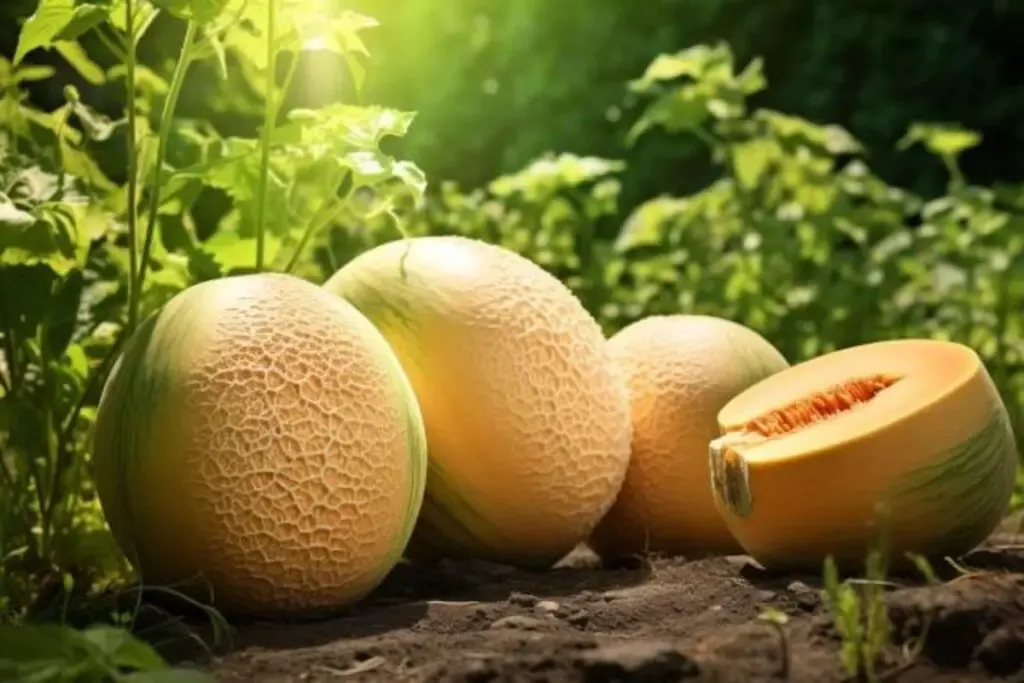
1. Nutritional Value
Cantaloupes are rich in vitamins and minerals, particularly vitamins A and C, and are a great source of hydration due to their high water content.
Growing them at home ensures a fresh and nutrient-rich addition to your diet.
2. Flavor and Freshness
There’s nothing quite like the taste of a cantaloupe picked fresh from the vine.
Homegrown cantaloupes tend to be sweeter and more flavorful than store-bought ones, which often are harvested before fully ripening.
3. Gardening Satisfaction
Growing cantaloupe can be incredibly rewarding. Watching the vines spread, flowers bloom, and fruits develop and ripen is a satisfying process that also enhances the biodiversity of your garden.
My Favorite Cantaloupe Varieties
Before we dive into the nitty-gritty of cantaloupe cultivation, let’s take a moment to appreciate some of my favorite cantaloupe varieties.
These selections offer not only delectable flavor but also ease of growth, making them perfect for gardeners of all levels:
1. Hales Best Jumbo
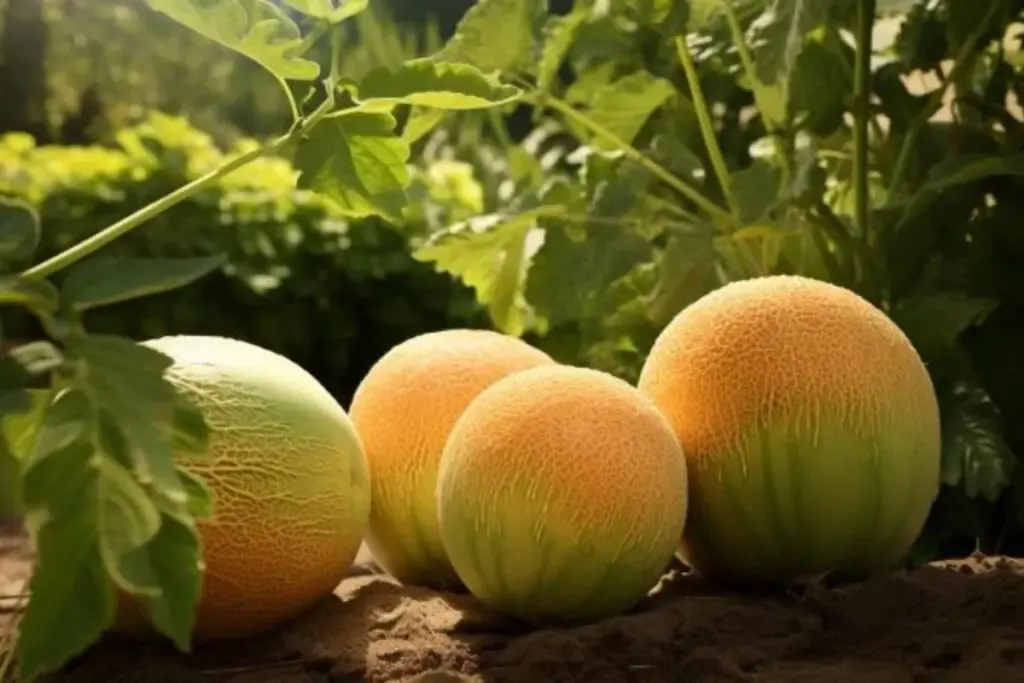
Hales Best Jumbo is a classic cantaloupe variety known for its exceptional sweetness and aromatic flavor.
It’s a reliable choice for home gardeners, and its fruits are typically larger in size, making them a juicy treat.
2. Sugar Queen
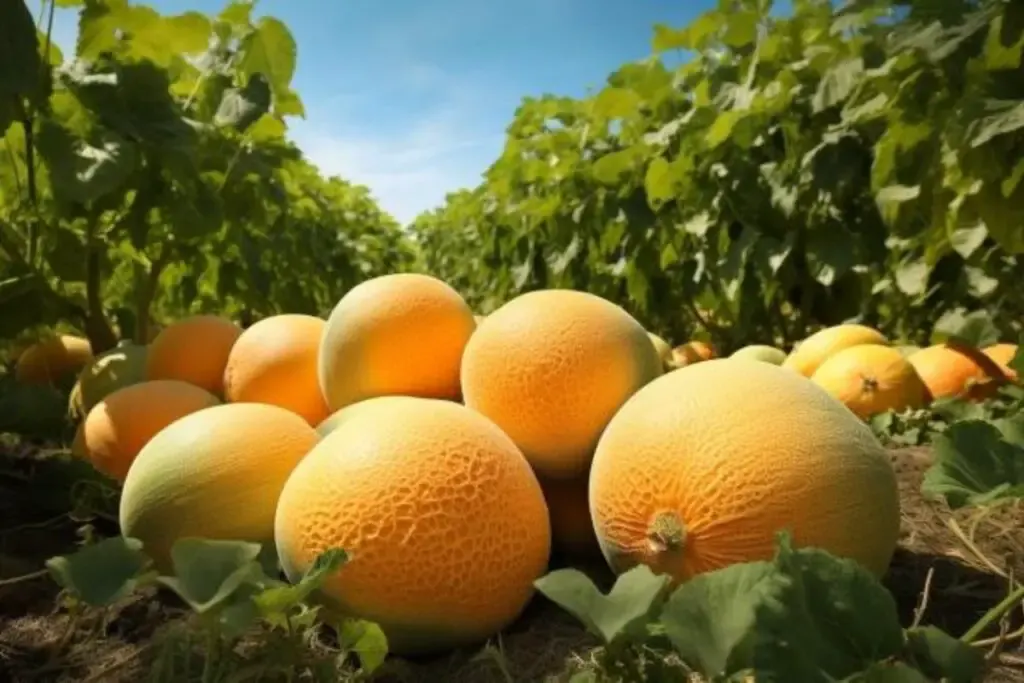
As the name suggests, Sugar Queen is a cantaloupe variety celebrated for its outstanding sweetness. It produces medium-sized, heavily netted fruits with delectable orange flesh.
This variety tends to perform well in a variety of growing conditions.
3. Sarah’s Choice
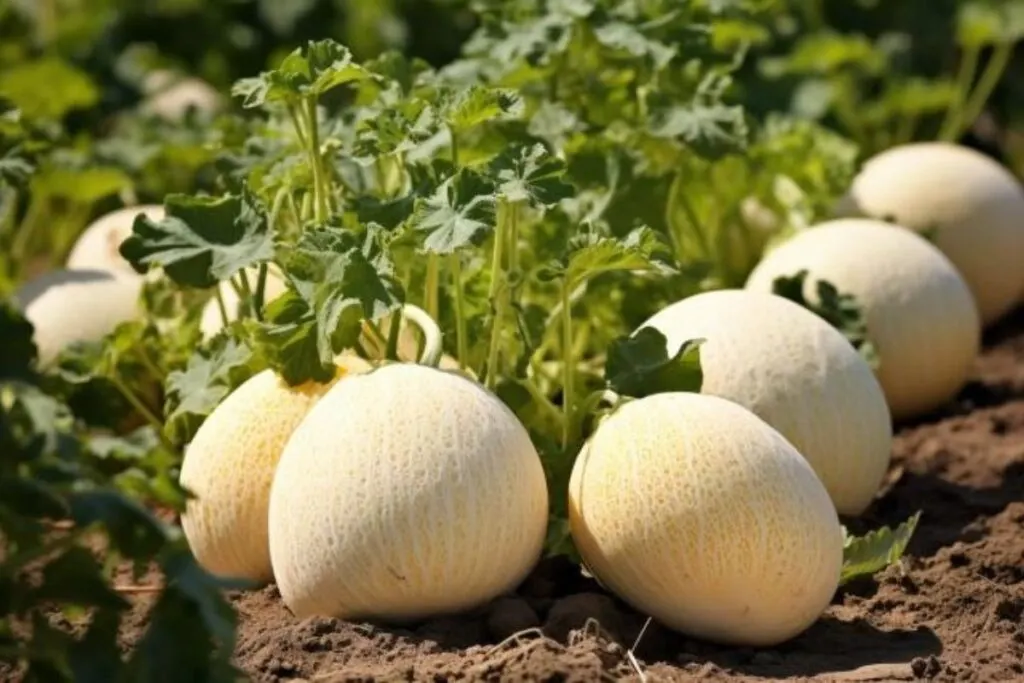
Sarah’s Choice is another excellent cantaloupe variety, known for its disease resistance and adaptability.
It produces medium-sized melons with a sweet and flavorful taste. This is a great choice for beginners looking for a dependable variety.
Cantaloupe Care
Caring for cantaloupe plants in your garden involves a few key steps to ensure healthy growth and a bountiful harvest.
Here’s a comprehensive guide to help you provide the best care for your cantaloupe plants.
Planting
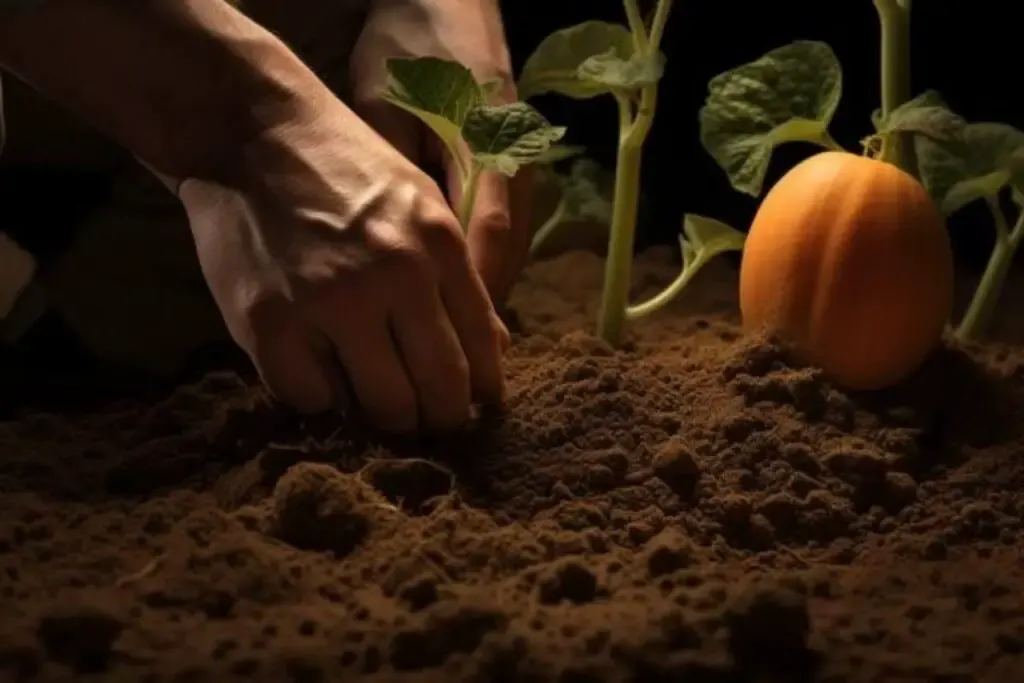
Cantaloupes thrive when directly sown into warm soil. Plant the seeds after the last frost when the soil temperature has warmed to at least 70°F.
Sow the seeds about 1 inch deep in hills, spacing them about 3 to 4 feet apart in rows that are 4 to 6 feet apart.
Cantaloupes can also be started indoors about 4 weeks before the last frost date and then transplanted outside.
Light
Cantaloupes require full sun to produce the best fruit. Ensure they get at least 6-8 hours of direct sunlight per day. A sunny location is vital for the development of sweet and flavorful melons.
Soil
Cantaloupes prefer well-draining, nutrient-rich soil. The ideal soil pH for cantaloupes is slightly acidic to neutral, around 6.0 to 6.8.
Before planting, enrich the soil with compost or well-rotted manure to boost its fertility and improve texture.
Water
Consistent watering is important for cantaloupes, especially during the plant’s growing and fruiting stages.
Aim to keep the soil consistently moist but not waterlogged. Once the fruit begins to grow, reduce watering slightly to encourage sweeter melons.
Temperature and Humidity
Cantaloupes are a warm-weather crop and grow best in temperatures between 70°F and 90°F. They are sensitive to frost and cold temperatures.
Ensure that your cantaloupes are planted in a location that maintains a warm temperature and has good air circulation to reduce excessive humidity.
Fertilizer
Fertilize cantaloupes at planting time with a balanced fertilizer. Once the plants start to grow, consider using a low-nitrogen, high-potassium, and phosphorus fertilizer to encourage fruit development.
Avoid over-fertilizing, as this can lead to lush foliage growth at the expense of fruit production.
Harvesting Cantaloupes
Knowing when and how to harvest cantaloupes is crucial to enjoying the peak of their flavor and sweetness. Here’s how to do it:
- Check for Ripeness: A ripe cantaloupe should have a sweet fragrance, a creamy yellow color on the skin beneath the netting, and a slightly soft feel at the blossom end when gently pressed.
- Use a Knife or Shears: To harvest, use a sharp knife or shears to cut the cantaloupe from the vine, leaving a short stem attached. Be careful not to damage the fruit.
- Timing Matters: Cantaloupes are typically ready for harvest 70-90 days after planting, depending on the variety and growing conditions. Harvesting too early can result in underripe, less flavorful fruits.
Pruning
Pruning can help improve the health and productivity of your cantaloupe plants:
- Remove Lateral Vines: As the vines grow, consider removing lateral vines and side shoots to redirect the plant’s energy toward fruit production and better air circulation.
- Trim Dead or Diseased Foliage: Regularly inspect the plant for dead or diseased leaves and remove them to prevent the spread of diseases.
Propagating
Cantaloupes are typically grown from seeds, but you can also propagate them from cuttings:
- From Seeds: Growing cantaloupes from seeds is the most common method. Simply save seeds from ripe fruits or purchase seeds from a reputable source. Plant them according to the recommended spacing and depth.
- From Cuttings: While less common, cantaloupes can be propagated from stem cuttings. Take a cutting with at least one node, allow it to root in a well-draining soil mix, and transplant it once it has established roots.
How to Grow Cantaloupe From Seed
Growing cantaloupe from seed is a rewarding experience. Here’s a step-by-step guide:
- Select High-Quality Seeds: Choose high-quality cantaloupe seeds from a trusted source or save seeds from ripe, open-pollinated fruits.
- Start Indoors (Optional): In regions with shorter growing seasons, you can start seeds indoors 2-4 weeks before the last expected frost date. Use biodegradable pots or seed trays filled with a seed starting mix.
- Planting Outdoors: Wait until all danger of frost has passed and the soil has warmed up before planting outdoors. Create mounds or rows, spacing seeds 18-24 inches apart. Plant seeds 1 inch deep.
- Provide Proper Care: Keep the soil consistently moist but not waterlogged. Once the seedlings emerge and develop their first true leaves, thin them to the strongest plants.
- Support Vines: As the vines grow, provide support, such as trellises or cages, to keep the fruit off the ground and reduce the risk of pests and diseases.
Growing in Pots
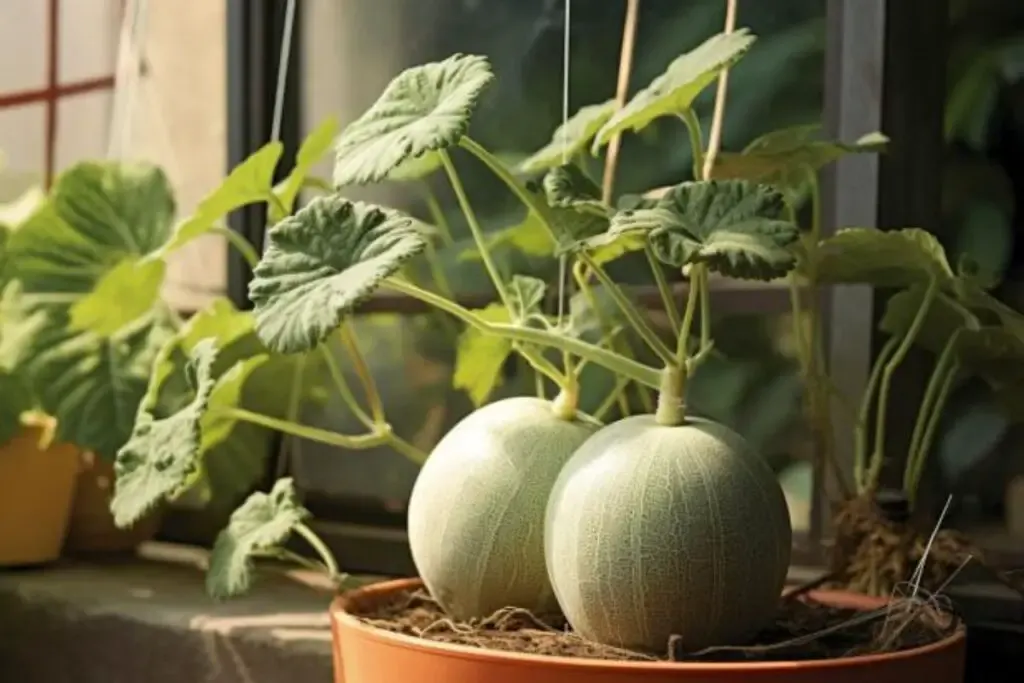
Even if you have limited space, you can successfully grow cantaloupe in pots or containers:
- Container Size: Choose a large container with a minimum capacity of 5 gallons for each cantaloupe plant. Ensure the container has good drainage.
- Quality Potting Mix: Use a high-quality potting mix with added organic matter to ensure proper drainage and nutrient availability.
- Support and Training: Provide sturdy support for the vines, such as trellises or stakes, and train the vines upward to save space.
- Water and Fertilize Carefully: Container-grown cantaloupes may require more frequent watering and feeding. Monitor the moisture level and use a balanced, slow-release fertilizer.
Overwintering
Cantaloupes are warm-season plants, and they are not typically grown as perennials. However, in regions with mild winters, you may attempt to overwinter them for a head start in the following growing season.
Here’s how:
- Cut Back Vines: As winter approaches and the plant’s growth slows, cut back the cantaloupe vines, leaving a few inches of growth. This helps conserve energy.
- Mulch: Apply a thick layer of mulch around the base of the plant to protect the roots from freezing temperatures.
- Cover or Move Indoors: In extremely cold climates, consider covering the plant with a frost cloth or moving it to a greenhouse or indoor space with ample sunlight.
- Monitor Moisture: While the plant is dormant, monitor soil moisture levels to prevent it from drying out completely.
Transplanting
Transplanting cantaloupe seedlings can be a useful technique to extend your growing season or to ensure your plants have the best possible start.
Follow these steps for successful transplanting:
- Timing: Start cantaloupe seeds indoors 2-4 weeks before your last expected frost date. Transplant seedlings outdoors when they have at least two true leaves and all danger of frost has passed.
- Harden Off: Before transplanting, gradually acclimate seedlings to outdoor conditions by placing them outside for a few hours each day over the course of a week.
- Spacing: Space transplants 18-24 inches apart in rows, with rows spaced 5-6 feet apart, similar to direct-seeded plants.
- Handle with Care: When transplanting, handle the seedlings gently to avoid damaging the roots or stems.
Common Pests & Diseases
While cantaloupes are relatively easy to grow, they are not immune to pests and diseases. Here are some common issues you may encounter and how to deal with them:
- Aphids: These tiny insects can cluster on the undersides of leaves, sucking plant juices. Use insecticidal soap or a strong spray of water to dislodge them.
- Powdery Mildew: A common fungal disease, powdery mildew appears as a white, powdery substance on leaves. Improve air circulation, avoid overhead watering, and use fungicides if necessary.
- Cucumber Beetles: These beetles can damage leaves and transmit bacterial wilt. Use row covers to protect plants early in the season and apply insecticides if infestations occur.
- Root Rot: Overly wet conditions can lead to root rot. Ensure proper drainage and avoid overwatering.
- Spider Mites: These tiny pests can cause stippling on leaves. Regularly inspect the undersides of leaves and use insecticidal soap to control infestations.
As you embark on your journey of growing and caring for cantaloupe, remember that gardening is a wonderful blend of patience, nurturing, and learning from the challenges you encounter.
Whether you’re a seasoned gardener or a beginner, the joy of harvesting your own sweet and succulent cantaloupes is well worth the effort.
Happy gardening!

